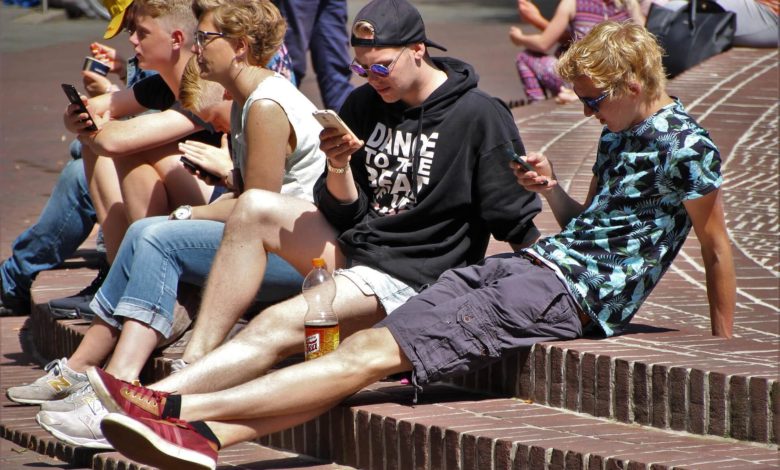How Does Technology Affect Children and Adolescents?

There are areas of the brain that react to exciting or rewarding situations, as well as areas that help plan and control impulses. Both systems work together to aid learning. As children and teens develop, their brains change and develop, which shifts the balances between reward zones and control zones. These brain changes make kids and teens more willing to explore, take risks, and learn from their friends. However, these brain changes also make it difficult for kids to regulate their behavior, especially when friends are around or there is too much excitement.
Technology can enhance learning by touching the balance between reward and control. However, some technological features can also encourage unhealthy social interactions or make it very difficult to control online impulses. This article provides information on how the control and reward areas of the brain of digital devices affect learning and how to encourage positive learning.
Young People’s Use of Technology Increases Day by Day
When it comes to technology, kids and teens are the ultimate experts. Ninety-five percent of teenagers between the ages of 13 and 17 in the United States have a smartphone, and 94% report using the Internet at least once a day. As children grow up and become adolescents, they gain independence and, especially during their secondary school years, they start to use technological devices with them. Technology offers many opportunities to connect, learn and have fun inside and outside the classroom. However, technology also carries risks such as distraction from other activities and relationships, too much screen time, or the desire to share constantly. In addition, the positive or negative effects of technology differ with some of the basic characteristics of individuals whose brains develop in youth.
Technology Impact Depends on the Quality of Online Activities
Research on the use of technology is difficult for several main reasons. These reasons make it difficult for people to accurately report how much media they use. It is difficult to know whether the use of technology is causing children to have bad grades and upset, or whether children who already get bad grades and are upset are using more technology. And it is necessary to wait for the growth of users to measure the long term effects. Despite these challenges, these researches are truly important.
Researchers, using technology in moderation; They found that the key. People who spend too little or too much time using digital devices experience most of the problems. However, spending a decent amount of high-quality time on digital devices can be associated with positive experiences such as feeling happy and connecting with friends. High-quality activities, such as chatting with friends and family, working on a project, creating content or learning through videos, are activities that require the person to be actively engaged in technology.
Low-quality activities are associated with feelings of depression, jealousy, and loneliness, and encourage passive surfing, comparing oneself with others on social media, or using devices late into the night. Some people may even prefer to use technological devices without finishing other tasks. It is also important to use technology purposefully and avoid multitasking and distractions. For example, if the user does homework while chatting with friends, the quality of both activities may be affected.
The Effect of Social Media on the Social-Emotional Development of Young People
The teenage years (adolescence) is a period when children learn a lot both inside and outside the classroom, discover their interests, find out who they are and how they feel about themselves. Between the ages of 10-24, major changes occur in the body and brain. During these years the person becomes particularly sensitive to what is happening around him because the brain networks that control socio-emotional development mature faster socio-emotionally than cognitive control. The cognitive control network is responsible for mental processes such as attention, memory, and decision making that guide thoughts and behaviors to help the person achieve their goals. This means that decision-making and learning capacity is affected by how exciting or social the situation is.
Young people have very important socio-emotional development goals. It can be influenced by social media, such as discovering who they are and developing relationships with others. Teens tend to pay close attention to the number of likes or follows on social media because it is especially important to them to be liked by their peers and popular and admired during this time. This should receive external rewards. Positive feedback, especially from friends, may be one of the reasons why most adolescents are constantly using social media.
Social media can be a great tool to connect with friends (like learning what a friend likes or encouraging them) when used in a positive way. Another important positive aspect of social media is that it creates many identity development opportunities; For example, it can gain identity as a student, friend, brother or fan of a favorite group. This discovery will help to understand who the person is, what and who he likes.
However, the desire to be popular can also trigger the need to post about risky events, make rude comments, or post descriptive pictures to grab attention. Digital drama, cyberbullying, and exposure to inappropriate materials can also stress or upset adolescents and damage a person’s reputation. When emotions arise, it is particularly difficult to make good decisions as their cognitive control abilities are still immature.Therefore, when preparing a response to a friend who hurt feelings or thinks about which picture to send, one should take some time to calm down and consider whether or not to regret the permanent imprint that may leave on their self in the future.
Some of the features of social media, such as the ability to like, share and comment openly, can make people do things to attract more attention, attract a virtual audience, and compare themselves to others. Studies have found that middle school adolescents who compare themselves with others and seek feedback through social media report more depressive and anxious symptoms. Also, spending a lot of time browsing to follow others can affect a person’s self-esteem. However, one question that researchers are trying to answer is whether online activities are causing problems or whether people who already experience these problems tend to use social media in potentially harmful ways.





